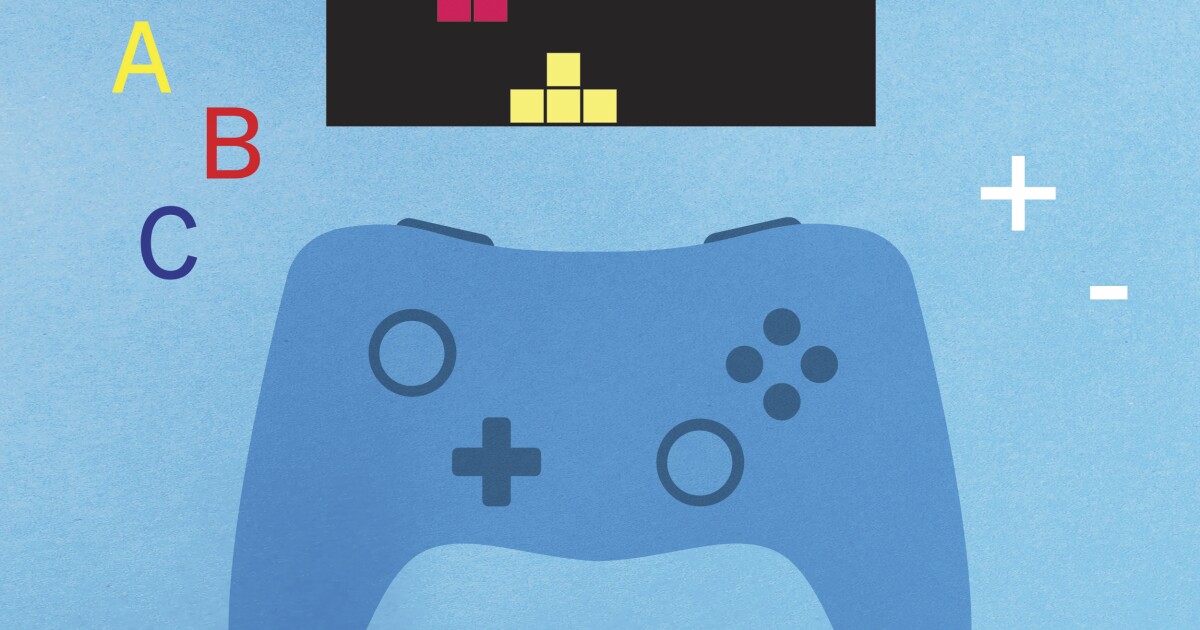Photos show Chinese rover on dusty, rocky Martian surface
 ]
]
China is the second country to land and operate a spacecraft on Mars, after the US
The Chinese Mars rover Zhurong is seen near its landing platform taken by a remote camera that was dropped into position by the rover. Image Credit: CNSA via AP
Beijing: The dusty, rocky Martian surface and a Chinese rover and lander bearing small national flags were seen in photos released Friday that the rover took on the red planet.
The four pictures released by the China National Space Administration also show the upper stage of the Zhurong rover and the view from the rover before it rolled off its platform.
Zhurong placed a remote camera about 10 meters from the landing platform, then withdrew to take a group portrait, the CNSA said.
The landing platform with a Chinese national flag and outlines of the mascots for the 2022 Beijing Winter Olympics and Paralympics on Mars is seen from the rover Zhurong. Image Credit: CNSA via AP
China landed the Tianwen-1 spacecraft carrying the rover on Mars last month after it spent about three months orbiting the red planet. China is the second country to land and operate a spacecraft on Mars, after the United States.
The orbiter and lander both display small Chinese flags and the lander has outlines of the mascots for the 2022 Beijing Winter Olympics and Paralympics.
The six-wheeled rover is surveying an area known as Utopia Planitia, especially searching for signs of water or ice that could lend clues as to whether Mars ever sustained life.
At 1.85 meters in height, Zhurong is significantly smaller than the US’s Perseverance rover which is exploring the planet with a tiny helicopter. NASA expects its rover to collect its first sample in July for return to Earth as early as 2031.
The landscape of Mars captured by Chinese rover Zhurong of the Tianwen-1 mission is seen in this image released by China National Space Administration (CNSA). Image Credit: REUTERS
In addition to the Mars mission, China’s ambitious space program plans to send the first crew to its new space station next week. The three crew members plan to stay for three months on the Tianhe, or Heavenly Harmony, station, far exceeding the length of any previous Chinese mission. They will perform spacewalks, construction and maintenance work and carry out science experiments.
Mizos laud people of Bihar for kindness to train passengers
]
Mizoram CM Zoramthanga tweeted, “Few days after stranded Mizos offers their food to flood-affected victims on their way back, a brief halt of their Shramik Special Train at Begusarai, Bihar witnessed good Samaritans offering them food in return! Goodness for goodness. India is beautiful when flooded with love.”
The Mizo community lauded the gesture of villagers in Bihar who provided fruits and prepared food for the people of northeast, mostly from Mizoram, at a stationary train near Begusarai.
This came a week after a special train carrying 1,300 people home to four northeastern States was attacked in Bihar’s Danapur by people wanting to get in.
Videos of local people trooping in and handing out packets and baskets containing food to the passengers were widely shared on social media by Mizos and other communities in the northeast.
Mizoram’s Chief Minister Zoramthanga tweeted about the gesture.
“Few days after stranded Mizos offers their food to flood-affected victims on their way back, a brief halt of their Shramik Special Train at Begusarai, Bihar witnessed good Samaritans offering them food in return! Goodness for goodness. India is beautiful when flooded with love,” he wrote.
Few days after stranded Mizos offers their food to flood-affected victims on their way back, a brief halt of their #ShramikSpecialTrain at #Begusarai Bihar witnessed good #Samaritans offering them food in return!
Goodness for goodness.#India is beautiful when flooded with #Love pic.twitter.com/6aPs3BQoc1 — Zoramthanga (@ZoramthangaCM) May 30, 2020
He was referring to another viral video that showed some Mizoram returnees providing food to flood-affected people in western Assam from a moving train. The flood-hit had taken shelter beside the railway track.
“As a leader, it is my responsibility to ensure communal harmony in my State and elsewhere in the country. It is always better to focus on the positives during times of crisis such as COVID-19 pandemic,” the 75-year-old Chief Minister told The Hindu on May 31.
Mr. Zoramthanga’s tweet has been appreciated by people in Mizoram and Bihar alike.
“Thanks Mr. Chief Minister for tweeting this. I am from Begusarai but living in Maharashtra but shown place is nearby area of my home. It’s a pride moment for all of us. Thanks again on recognising noble work by people of Begusarai. Folded hands (sic),” replied Twitter user Prashant Kumar.
“Totally melt my heart. This is the India i know and love. God bless you all for your kindness to our brothers and sisters. Jai Hind! Raised hand,” wrote Zampuii from Mizoram.
Op-Ed: How much do kids learn from ‘educational’ video games? A ratings system could address that
 ]
]
Before the pandemic, the average American child between 8 and 18 played video games for an hour and 20 minutes a day, and if my kids are representative, that figure skyrocketed this past year. Like many parents, I gave in to increased gaming time but gravely told my children they should choose educational games.
Unlike many parents, I knew my rule made no sense. I study learning for a living, and it’s usually impossible to know what, if anything, kids will learn from a video game based on a simple description of it. Gaming companies should tell us, and while that may sound like the fox guarding the henhouse, there is a model that could make it work.
The Entertainment Software Rating Board rates games for objectionable content like sex and violence. That’s helpful, but it should be as easy for parents to guide their kids toward enriching games as it is to shield them from unacceptable ones. A similar board should rate educational content.
Here’s why parents need help. Most educational games don’t simply teach academic content (like math or history) and test kids to be sure they’ve got it. Kids learn from such games, but they can be boring, like a worksheet with animated characters. They’re derided in the industry as “chocolate-covered broccoli.”
Advertisement
To make them fun, game creators either make the content less academic (and claim education will still benefit) or remove the tests (and claim kids will still learn). But the effect of either change on learning is unpredictable.
People have long believed that games can make you smarter if they’re mentally challenging. Leaders in the former Soviet Union touted chess to citizens in the 1930s for that reason, but research shows that playing chess brings no benefit to schooling.
Today, some games are designed to tax working memory — the ability to juggle information in the mind. Improved working memory would be a boon because it’s important to reasoning skills. But playing such games makes you better only at similar games; it doesn’t strengthen working memory.
Yet on occasion the strategy works. Games that demand spatial thinking, like solving jigsaw puzzles or playing Tetris, do improve spatial thinking skills, an ability linked to success in math and science.
Other games may feature recognizable academic content but not quiz players on it. For example, a game may showcase a painstakingly accurate rendering of the Notre Dame Cathedral, but the player needn’t learn about the architecture to succeed in the game.
If you don’t have to learn it, why would you? Much of what’s in your memory stuck because you thought about it, not because you were quizzed on it. That’s why you know Jill Biden’s profession and whether Prince Harry is married. And that’s why kids learn from educational television programs like “Sesame Street” and “Blue’s Clues,” even though the programs don’t quiz viewers.
But exposure doesn’t guarantee learning. Despite seeing thousands of dollar bills, you may not know precisely where “In God We Trust” is written on them. Similarly, we can’t be sure kids will learn something just because it’s in a game. They have to think about it, and that’s guaranteed only if the information is crucial to playing.
Advertisement
Even then, “will they think about it?” isn’t always obvious. For example, in the game “Roller Coaster Tycoon” players build virtual roller coasters that obey laws of gravity, inertia and so on. Some reviewers laud the educational value, but the laws of physics are so unintuitive, it’s more likely gamers play by trial and error. And predictably, some players actually relish crashes.
A game description is not enough to tell parents what, if anything, their child will learn. Someone who understands cognition needs to evaluate gameplay. The video gaming industry could arrange for that.
An obvious concern is that the industry will deem every game educational, even if learning is limited to “increased thumb dexterity.” But the Entertainment Software Rating Board, which has rated games for objectionable content since 1994, has avoided bias and earned praise from the Federal Trade Commission.
An industry lobbying group created and oversees the board, but it remains independent. Game makers submit a detailed description of a new game, which is then evaluated by three professional raters. The board offers an overall age recommendation and information about the presence of objectional content in 30 specific categories, for example “alcohol reference” and “crude humor.”
Advertisement
Experts in learning could create ratings for educational content. The categories would tell parents the topics their child might learn about, including whether the learning is likely to transfer beyond the game. The rating would assess the likelihood that learning should actually happen, based on an analysis of gameplay.
This information could be added to parental controls that are already integrated into mainstream gaming systems and which many parents already use to limit gaming time.
I don’t think my kids need to learn something from every leisure activity, but it would be nice to know more about the games I’m greenlighting. Given the enormous cultural influence of gaming companies, they owe parents that much.
Daniel T. Willingham is a professor in the department of psychology at the University of Virginia.